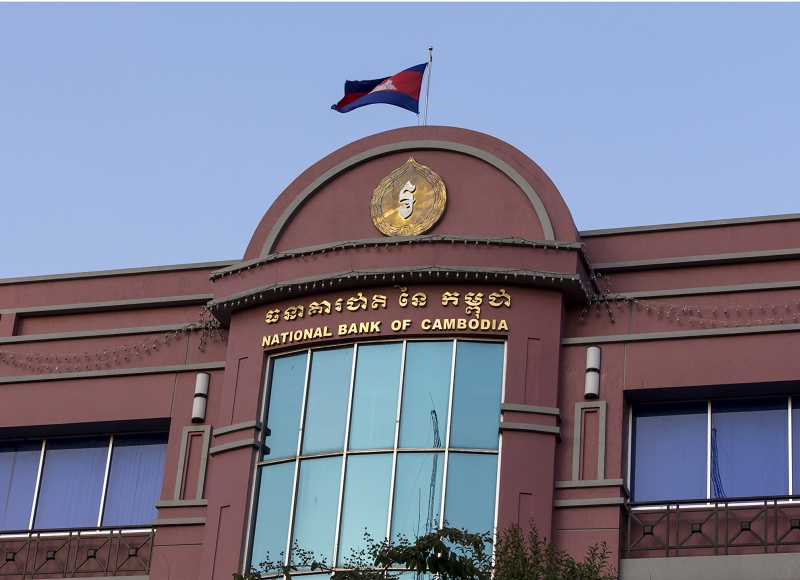Industry Report 2023: Is Cambodian Banking Sector Highly Oversaturated?

Is Cambodia’s banking industry highly oversaturated?
The Cambodian banking industry is facing increasing systemic risks due to the looming economic uncertainty and rising non-performing loans (NPLs). Key indicators, such as Total Credit (% of GDP), Credit Non-financial (% of GDP), and Domestic Credit to Private Sector (% of GDP) are recorded at 195%, 188%, and 177%, respectively, as of the end of 2022. These figures are often used to argue that Cambodia’s private sector is over-indebted, leading to concerns about the local banking industry being highly oversaturated.
However, using these ratios to assess the overall indebtedness of an economy’s private sector and making direct comparisons with other countries requires a few important adjustments to both the numerator (Credit amounts to private sector) and the denominator (GDP figures).
First, the above-mentioned ratios do not effectively serve our purpose of assessing the private sector’s level of indebtedness. For example, the “Total credit (% of GDP)” includes financial institutions (banks & MFIs) as borrowers, while both “Credit to Non-financial (% GDP)” and “Domestic Credit to Private Sector (% of GDP)” do not account for borrowings from overseas lenders, non-financial institutions, general governments, households, and others. Although these factors may not be significant in Cambodia, they can have a substantial impact in other countries to which Cambodia is usually compared.
In that matter, the IMF’s “private debt, loans, and debt securities % of GDP” seems more suitable for comparing the overall indebtedness of private sector across countries with different level of economic and financial development.
Furthermore, we believe that the private sector’s debt level relative to GDP, particularly for countries like Cambodia, tends to be overestimated due to the country’s substantially larger informal economy and significantly smaller government final consumption expenditure. These can make the country’s GDP appear much smaller than that of other counties, thereby making Cambodia’ ratio look much greater compared to that of other counties.
After factoring in the necessary adjustments, we were able to draw meaningfully different results with some useful takeaways mentioned below.
The key takeaways
- First, after adjusting for (1) government final consumption expenditure and (2) informal economy, Cambodia’s level of private sector debt remains relatively lower compared to more advanced economies in Asia, such as Thailand, Malaysia, Singapore, and South Korea.
- Although the adjusted ratio itself suggests that Cambodia remains lower in the overall private sector debt, the rapid growth rate of private sector debt raises concerns about potential over-indebtedness, highlighting the financial sector’s susceptibility to external shocks.
- Interestingly, Thailand had a similar experience during 1990s where the ratio rose steeply in the first half of 1990s followed by a seemingly painful correction in the second half. Even if the correction may have been exacerbated by the Asian financial crisis triggered by sudden outflows of capital from foreign lenders, the drop in private sector debt seems much deeper in Thailand than other Asian economies. Although it is not likely for Cambodia to follow suit as Cambodia’s current situation is fundamentally different from Thailand’s back then, as Cambodia’s private sector almost solely rely on credit from domestic banking industry while Thailand’s private sector back then was heavily reliant on credit from overseas lenders, Thailand is an example of a potential risk of rapidly increased private sector debt.
- Therefore, it is more important for Cambodia’s banking sector, as the major domestic lender, to be mindful of the growth rate and maintain a sustainable ratio moving forward. For example, the local private sector still has room for a double-digit growth of 10% for the next five years then continue to grow at the expected rate of nominal GDP growth of approximately 7%, while maintaining the adjusted ratio at around 140%.
- Sustaining future credit growth rates similar to the past five-year average of 20% may no longer be feasible or advisable. The current situation calls for a long-term oriented approach, shifting focus towards qualitative rather than purely quantitative growth. By adopting responsible and cautious approach, relevant stakeholders may mitigate potential risks and ensure the stability and health of Cambodia’s banking industry and overall economy.
